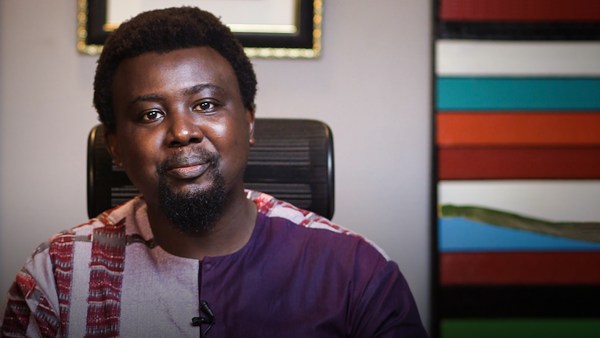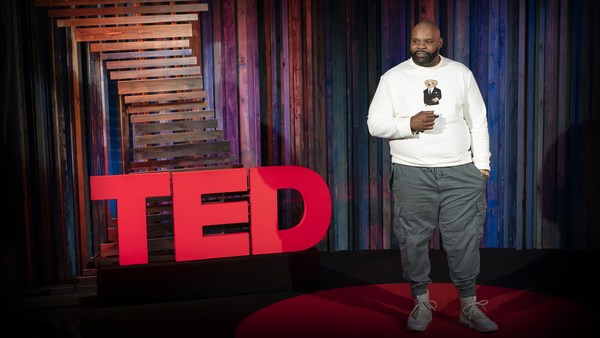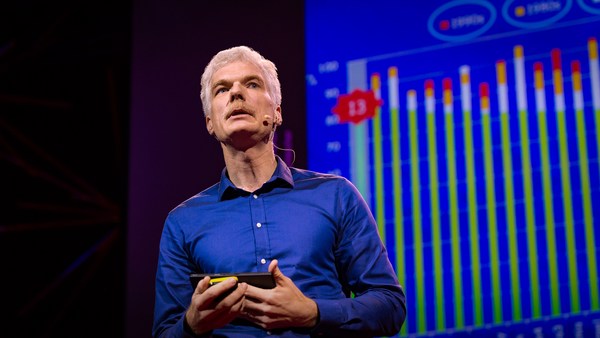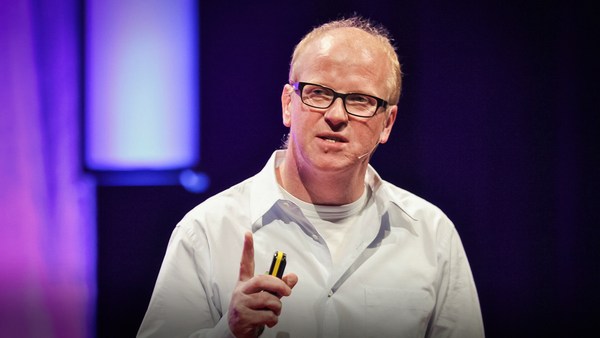My father grew up in the Deep South in the 1940s and '50s, at a time when schools were still segregated and the promise of going to college was less a promise and more like a game of roulette. And so for many like him, the only real choices they had were to stay in their hometown, go into the military or to attempt to go to college.
Well, my father served 20 years, proudly and honorably, in the United States Air Force. The barriers to college were just too high. When he retired from the military, he did go back to college, and using his GI Bill and studying at night for almost six years, he graduated one year before I was graduating from college. I remember going to his commencement and watching him walk across the stage, and my eyes just filled with tears. And I actually am not sure that I saw him get his diploma, because I was crying like a baby.
(Laughter)
You know, around the world, less than seven percent of people own a bachelor’s degree. But there are many who would like to go to university. But for them, much like my father, the barriers to getting into and graduating from college are just too high. It simply costs too much. And that cost is often the price of tuition.
In the United States, a four-year bachelor's degree can cost in excess of 100,000 dollars, and that price point continues to escalate. And this is true in other parts of the world, but sometimes, the cost is high because there is no university nearby to study, on- or off-line. Or because the academic hurdles are so high that university is only afforded to the privileged few.
We, as institutions of higher education, we build walls around ourselves and expect students to find their ways over. But this shouldn't be. What I care most about, and what I have devoted my entire career to as an educator, and now, as an administrator at one of the largest universities in the United States, is seeing more people -- traditional college-aged as well as working adults -- getting into and graduating from college. But if we are to do this, institutions are going to have to redesign themselves to reach out and reach for more students, versus students trying to reach the institutions over those walls. And if we are going to do that, we have to dramatically drive down the cost of higher education, and the way to do it is to rethink and reimagine in these three ways. We have to rethink time ... place ... and how we teach.
So the first is time. Time goes hand in hand with cost, and this is how it typically goes. College courses and degrees are typically assessed based on credit hours. And each credit costs money. So therefore, in this scenario, time, therefore cost, is fixed, and learning is variable. This really makes it problematic to drive down cost, and it particularly becomes problematic if you’re trying to balance school, work and other family obligations, as well as other obligations and responsibilities. But if we are to flip that scenario, and therefore make learning the constant and time variable, then we break the tyranny of time. I mean, really, isn't that what school is about? It's about learning and gaining mastery, versus logging in a particular number of hours.
So what could we do? We should make and give academic credit for life experiences. Why sit through an entire business management course for a semester, when you can have a university evaluator assess you based on your experience? So this is what this would look like. Let's take a student, Brandice. Brandice is an automotive technician at a car service center. Now let’s take three of the certifications that she received and is required for her to do her work: electrical systems; manual drive, train and axles; and engine performance. Now you take those and you couple with the fact that Brandice is actually managing a team of technicians on the floor. You assess all of that, and she finds out that she's just a few credits shy of a college degree, a degree in automotive engineering or engineering management. And then on top of that, during that assessment, she find out that she has a pathway to receive the remainder of those credits for her degree in less than five months.
A few of us are doing this. But here's what I hope for. My hope is that time becomes even more variable. So let's build a global skills bank, much like a financial bank. But in this case, skills and experiences are the currency. So if you take an evening course in accounting, deposit that into your bank. If you do a summer internship at a marketing firm, deposit that into your bank. If we're able to do this, and do this at scale, we could dramatically decrease the time to complete a degree, therefore drive down cost.
Second ... place. We have to completely reenvision and reimagine how we think [about] and we see place. We know that physical college campuses are expensive to maintain, and we have to understand that we should look at learning options in a variety of different ways. But there's also another cost that we need to lower ... and it's the cost of belonging -- whether it's because there is not a university nearby for you to learn, be it online or offline, or because there are emotional or cultural walls that disconnect the learner from that learning location.
Cameron, as a student, should be able to take classes in a community center or in his church. He should be able to seek career advising and support from local business owners and businesses. We should be able to take his work and his volunteer experiences and turn those intro credits, all in a community that he trusts. And then therefore, we are making that community a thriving, vital part of a learning ecosystem, for him and for many others. If we can do this, this means that we absolutely have to believe that learning can take place anywhere. And if we do, then we decrease the cost of place.
Finally, teaching, what about teaching? Well, teaching is at the heart of learning. Teaching is the inspiration and the connection. It is the spark that connects the learner to the information.
So there's nothing that we want to do to mess with that magic. But we do know that teaching is one of the higher costs of education. So what do we do? We should take the most inspirational and engaging teachers, and all that teaching charm that comes with it, and make bigger classrooms for them, scaling and expanding their reach. So most classes are 20 to 30 students, or in some cases, a couple of hundred. But in online, you can reach thousands all around the world. We currently have a course called Human Relations and Administration. It's a foundational course for all undergraduate business majors. This course has upwards of 3,000 students from all over the world -- the US, Canada, Germany, India and the list just goes on and on. We also have classes that are upwards of 5,000, and we aspire to scale even more. We want it so that wherever you have an internet connection, you can put a virtual butt in a seat.
Now, there are folks who are skeptical about online, particularly large online classrooms, and they posit that smaller classrooms are better. But I would argue what smaller classrooms are really providing is personalization. As so with personalization, this is what I want to see. I want to see a student, regardless of where they are, regardless of their location, have a single source, be it their mobile phone or their laptop, where they have access to instruction, in real time or in their time. I want a faculty member to be able to anticipate a particular need for a student, outreach to that student, provide a connection for that student with a prepackaged academic toolkit that was prepared by a virtual or automated resource or service, and provide that human intervention for that student just at the right time. That's what chatbots and predictive analytics and AI can provide a university: insights into when is it the right time to provide that human intervention that helps that student to become unstuck, and to provide that personal support the student may need.
Some of us are doing this. But if we can really do this, and do this at scale, we are solving the problem by building faculty to do the thing that they are best at, and to do that inspiration at scale. And at the same time, we are helping to drive down the cost of higher education by still providing the personal support at the time that it's needed.
So I began this talk talking about my father. There's a lot that has changed about higher education over this period of time, and there are things that have not changed. We, as institutions, still find ourselves being exclusive and expensive, keeping students on the wrong side of that wall. Instead of thousands of autonomous universities, this is what I would like to see happen. I would like to see universities, companies and governments invest deeply in a higher education superhighway that allows for the fluidity and the transferability of experiences from place to place, from workplace to the classroom ... beyond borders and beyond boundaries. And in this case ... skills and competencies become the currency for a global workforce.
And if we're able to do this ... I invite you to a graduation where we will have seen millions, and possibly billions of students walk across that stage.
Thank you.
(Cheers and applause)





